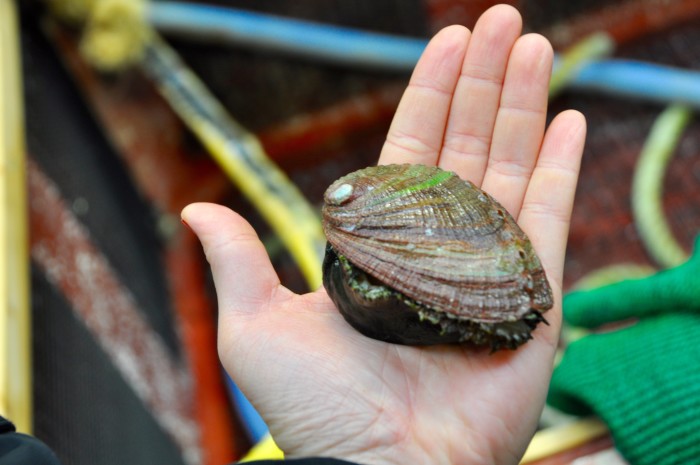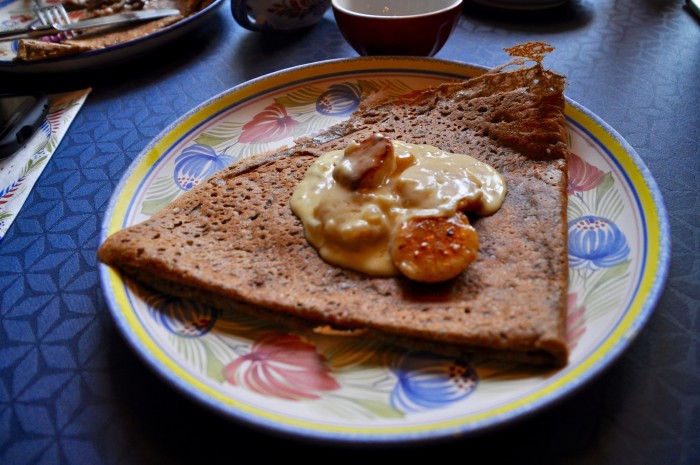Market Paradise: Where Chefs Shop And Eat In Brittany, France
Brittany is a region of France with long-held food traditions. The very western tip of the country is exposed to wild landscapes and temperamental weather, and the result is a mélange of rich and high-quality produce unique to the area. Its farmers and producers represent Brittany's best, having acquired a profound understanding of the land. They have a deeply rooted connection to their jobs, and the quality of these largely family-run businesses has garnered them praise from some of the most famous chefs in Europe. When the quality of ingredients is everything, as chefs believe, this is one region that truly stands out.
La Maison du Boulanger
The only ingredients you need for bread are flour, water and plenty of time. Michel Izard believes that time is one of the more important ingredients in the bread-making process. With time, the yeast in the flour has time to activate naturally, which results in tastier bread. Izard's philosophy and know-how has won him acclaim and led to training the bakers at Pierre Gagnaire's restaurant in Hong Kong. Here's how to find the best croissants out there: Izard cuts one of his croissants in half with scissors to show us the even distribution of holes in the dough, which means that the butter and flour were kneaded properly (a complex process).
France Haliotis
The farmers at France Haliotis specialize in organic abalones, a type of sea snail. They maintain the biggest abalone farm in Europe, the only farm to grow this species (Haliotis tuberculate), also known as the European abalone. Patience and passion are two important ingredients here, as each abalone can take three to five years to grow to a size that markets will sell. The benefits of the location in Brittany include fresh, clean water that results in the exceptional flavor of these specimens. The company also works with chefs to teach them how to work with the product, as many chefs don't know how to prepare and cook abalone. According to the farmers, the best way to keep them tender is to hit them gently with a mallet to tenderize the flesh, then sauté over medium heat with beurre salé, or salted butter (also a specialty of the Brittany region).
Creperie Ti Saozon
Historically, buckwheat grows in abundance in Brittany, which is why buckwheat crepes (known as galettes) are a specialty in the region. In the city of Roscoff, chef Estelle Combot is the third generation of her family to take over this cozy creperie, which is so good that it has attracted the likes of Michelin-starred chefs David Toutain and Yannick Alléno. When she was younger, Combot worked at a crepe factory, where she practiced the smooth hand motions necessary to make perfect crepes. Combot's great-great-grandmother's recipes allow the crepes themselves to shine; the fillings are simple accompaniments. Stop by Creperie Ti Saozon for a three-course prix fixe lunch and enjoy with a cup of local cider.
Bord à Bord
Many of the goods in Brittany come from the ocean, and Bord à Bord is no exception: It's an organic seaweed company that harvests and jars local seaweed for distribution across France. The company's signature seaweed tartare is made with a mix of wild local sea flora and organic extra-virgin olive oil, and its mustard is a blend of Dijon mustard and fresh sea lettuce. Bord à Bord also provides tips on how to use seaweed in simple seafood and meat recipes, as well as how to prepare it: Simply rinse in seawater and eat as is. Incorporating seaweed into fine dining is gaining more popularity in Europe. Bord à Bord's produce has been popular with restaurants in France, but now home cooks are buying it as well. The products can be found in organic markets and fish shops in Paris.
Prat Ar Coum
This company is run by fifth-generation oyster farmers (ostréiculteurs in French), and they have been harvesting and selling oysters since 1898. Additionally, they offer something truly unique: a best-selling Muscadet made from a family friend's vineyard in Nantes, which Prat Ar Coum ages not in a wine cellar, but 10 meters underwater. This has proven over time to be an excellent place to keep the bottles, as the yeast can survive the pressure. The producers don't make their special wines in big volumes for distribution, but you can taste it at their restaurant, which is only open in the summertime. Another benefit of aging wine in the Atlantic: The constant water temperature ages the wine faster. As for the oysters, Prat Ar Coum works with Michelin-start chefs like Guy Savoy and Pierre Gagnaire.
C. Chocolate
What could be better than seeing the chocolate-making process as you walk into this family-run salon? The owners believe that showing their customers how they work demonstrates that their chocolates are made with care. C. Chocolate crafts its treats from top-quality ingredients, all while using as little added sugar as possible. Flavors include bergamot wrapped in dark chocolate, and caramel and salted butter in dark chocolate. Light and delicious cakes are also available daily in the company's stores.







